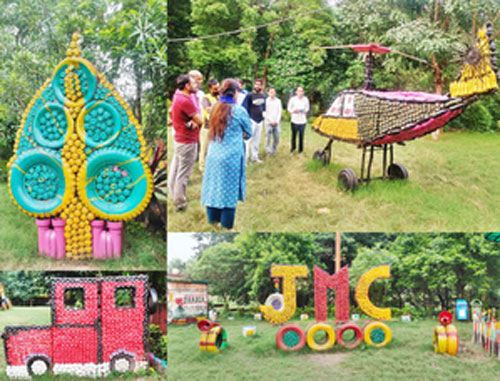The AAP government today has informed the Supreme Court that it is ready to necessary steps such as imposing a complete lockdown to curb the air pollution in the capital.

According to the Ministry of Environment, Forests, and Climate Change data, India recycled just 32.9 percent of the e-waste created in 2021-2022. While the amount is higher than in past years, it still shows that an astounding 10,74,024 tonnes (67%) of e-waste went unprocessed.

Sanitation workers in Jhabua, Madhya Pradesh, have transformed waste into stunning art, including helicopters and benches, revitalizing the park and setting a new standard for sustainability and creativity.

Have you ever wondered what happens to your old phone or broken laptop after you throw it away? Most of us don’t think about it, but these devices contain harmful chemicals that can damage the environment if not disposed of properly. This growing problem is known as e-waste. In India, it’s becoming a serious issue as more and more people use electronics every day.

Plastic waste has become a pervasive environmental challenge, with global production reaching over 320 million tonnes annually as of 2018. Alarmingly, only about 9% of this plastic is recycled, while the rest accumulates in landfills or pollutes our oceans. To combat this crisis, individuals and communities can adopt creative strategies to repurpose plastic waste, transforming it into innovative masterpieces. Central to this approach is the practice of the 3Rs: Reduce, Reuse, and Recycle.

 Technology is a useful servant, but a dangerous master, it was rightly said. Electronic devices have grown into an inevitable part of our daily lives.
Technology is a useful servant, but a dangerous master, it was rightly said. Electronic devices have grown into an inevitable part of our daily lives.


